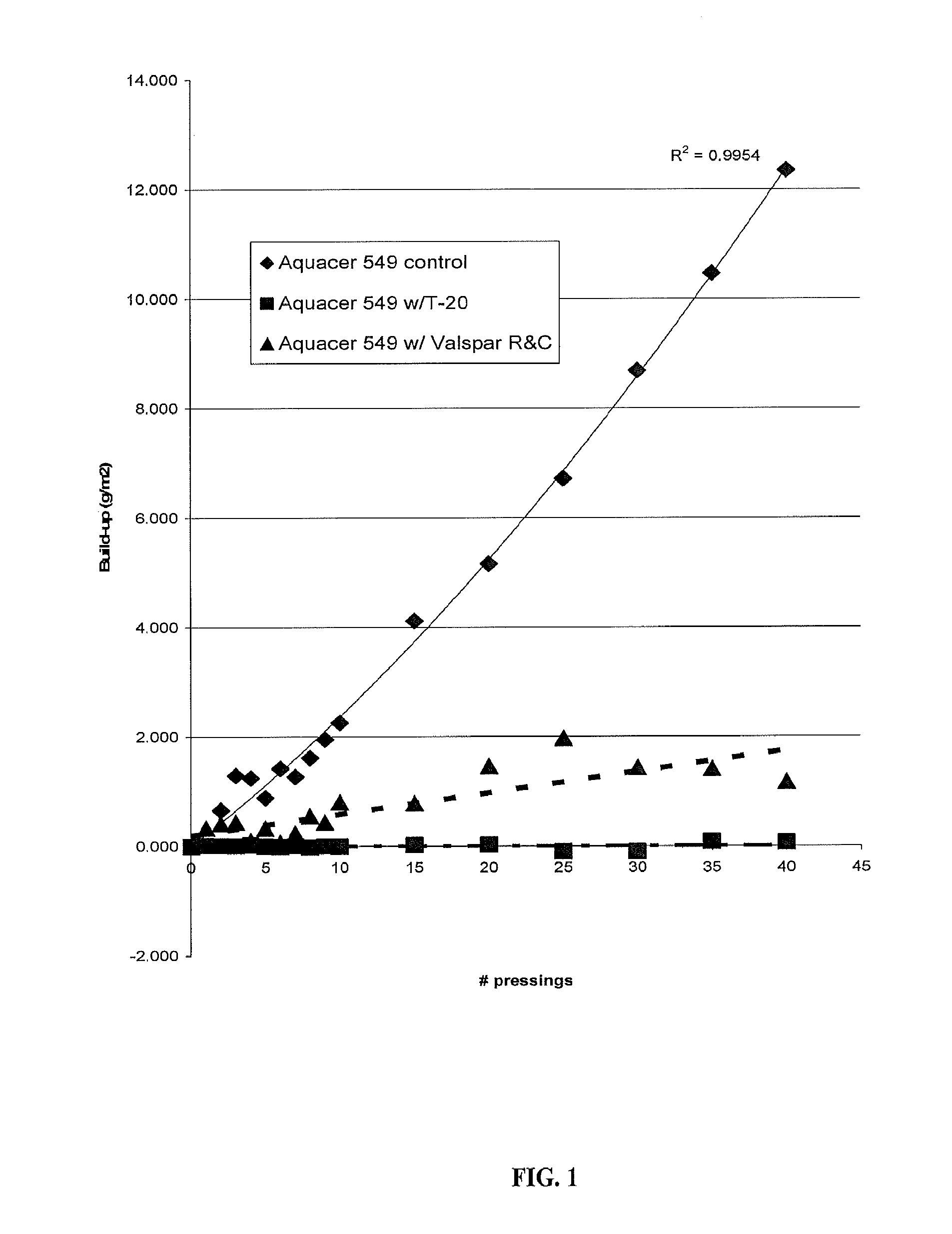Release Compositions for Lignocellulosic Composites
a technology of lignocellulosic composites and compositions, which is applied in the field of polyisocyanate adhesives/binders, can solve the problems of pmdi binders, formaldehyde is linked to human health risks, allergic reactions,
- Summary
- Abstract
- Description
- Claims
- Application Information
AI Technical Summary
Problems solved by technology
Method used
Image
Examples
example 1
Experimental Procedure: Simulated Die-Masking
[0072]Testing was completed to evaluate the “anti-masking” properties of ethoxylated fatty amine. To do so, wood composite panels were pressed on metal shim stock to simulate die masking. The wood composites were made from a substrate of southern yellow pine (Pinus sp.) flakes measuring about 100 mm×500 mm×1 mm in dimension. The substrate was treated with 6% by weight RUBINATE® M polymeric methylene diphenyl diisocyanate and 0.9% wood product accelerator 25010, both available from Huntsman. The adhesive-treated substrate was formed into 30×30 cm mats and topped with four thin nickel shim stock material measuring about 13×13 cm each. The formed wood composite mats were sprayed with 6.0 grams (at a concentration of 20 percent solids) of a paraffin release wax, AQUIFER® 539 products, from BYK USA Inc. Thereafter, two sets of mats were sprayed with 6.0 grams (at a concentration of 20 percent solids) of an anti-masking agent and one set of mat...
PUM
| Property | Measurement | Unit |
|---|---|---|
| Percent by mass | aaaaa | aaaaa |
| Percent by mass | aaaaa | aaaaa |
| Weight | aaaaa | aaaaa |
Abstract
Description
Claims
Application Information
 Login to View More
Login to View More - R&D
- Intellectual Property
- Life Sciences
- Materials
- Tech Scout
- Unparalleled Data Quality
- Higher Quality Content
- 60% Fewer Hallucinations
Browse by: Latest US Patents, China's latest patents, Technical Efficacy Thesaurus, Application Domain, Technology Topic, Popular Technical Reports.
© 2025 PatSnap. All rights reserved.Legal|Privacy policy|Modern Slavery Act Transparency Statement|Sitemap|About US| Contact US: help@patsnap.com



